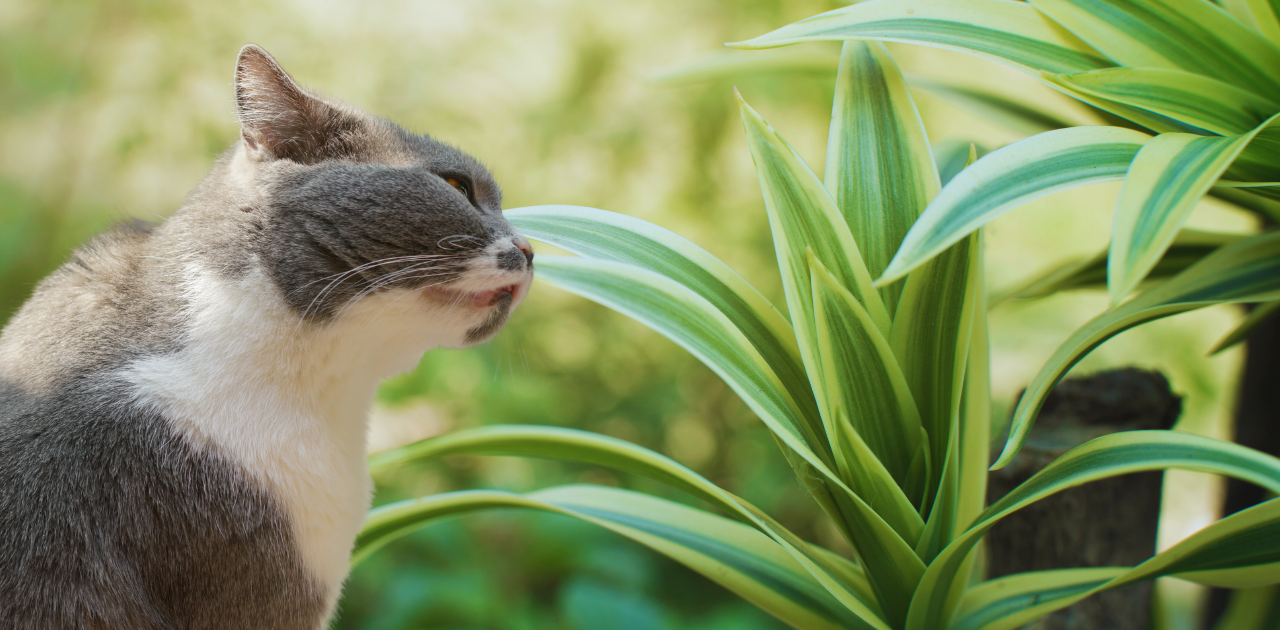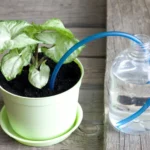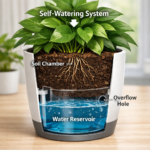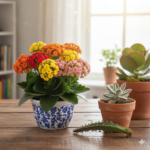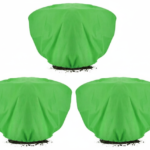As a cat owner, your pet’s safety is always a priority, especially for common household plants. Dracaena, a popular choice for its vibrant green leaves and easy maintenance, is found in many homes. But have you ever wondered if Dracaena is safe for your feline friend? Unfortunately, while these plants may add beauty to your home, they pose a risk to your cats.
Dracaena contains toxic compounds called saponins, which can cause harmful effects if ingested by cats. Symptoms of poisoning include vomiting, drooling, and loss of appetite, and in severe cases, it may lead to more serious health complications. Given cats’ natural curiosity and tendency to chew on plants, pet owners must be aware of the potential dangers posed by houseplants like Dracaena.
Whats Dracaena plants?

Dracaena plants are famous for indoor enthusiasts due to their attractive appearance and low maintenance needs. Known for their long, arching leaves and striking green patterns, Dracaena species come in various shapes and sizes, making them perfect for decorating homes and offices. These plants thrive in low light conditions, require minimal watering, and are known to purify the air, making them ideal for busy or novice plant owners.
Some of the most common types of Dracaena include Dracaena marginata (Dragon Tree), Dracaena fragrans (Corn Plant), and Dracaena reflexa (Song of India). Each variety has unique leaf patterns but shares the exact primary care requirements.
However, despite their popularity, Dracaena plants pose a risk to pets, especially cats. Their leaves contain toxic saponins, which can cause adverse animal reactions if ingested. Therefore, while Dracaena may be a beautiful addition to your home, it’s essential to consider the safety of your pets before bringing one into your living space.
Common species of Dracaena
Dracaena plants come in many species, each with a unique look, but all share similar care requirements. Here are some of the most common species:

- Dracaena marginata (Madagascar Dragon Tree): This species is one of the most popular Dracaena varieties. It’s known for its narrow, spiky leaves with red edges. It’s tall and slim, and it’s great for adding height to indoor spaces.
- Dracaena fragrans (Corn Plant): This variety has broad, glossy green leaves and is named for its resemblance to corn plants. It’s known for being especially easy to care for and can grow quite tall, making it a popular choice for large rooms.
- Dracaena reflex (Song of India): This species features yellow and green striped leaves with a bushier growth pattern. It’s a colorful option for brightening up any room.
- Dracaena sanderiana (Lucky Bamboo): This species is often used in feng shui. It is typically grown in water rather than soil and is known for its thin, bamboo-like stems.
- Dracaena deremensis (Janet Craig): A common indoor plant, Janet Craig has dark green, broad leaves and is admired for tolerating low light and minimal care.
Why Are Cats Attracted to Plants?
Cats are naturally curious creatures, and their attraction to plants can be linked to a few common behaviors and instincts. Here are some reasons why your cat may be drawn to nibbling on or playing with houseplants:

- Curiosity: Cats are curious by nature. Plants add new textures, scents, and colors to their environment, making them tempting objects to explore. Whether batting at dangling leaves or investigating something new in their territory, cats are often intrigued by plants.
- Chewing Instinct: Some cats like to chew on things, and plants provide an easily accessible target. This chewing behavior may be a way for cats to explore their surroundings or satisfy an instinctual urge to gnaw on vegetation, similar to how wild cats sometimes consume plants to aid digestion.
- Boredom or Playfulness: If cats lack stimulation, they might turn to plants for entertainment. The movement of leaves or hanging branches can mimic the appearance of prey, encouraging a cat to pounce, swat, or nibble at the plant.
- Digestive Aid: Some cats chew on plants to help with digestion or induce vomiting if they feel unwell. Cats may instinctively eat grass or vegetation to help expel hairballs or soothe an upset stomach.
Read our post: Are Orchids Safe for Cats? Everything You Need to Know
Is Dracaena Poisonous to Cats?
Yes, Dracaena is poisonous to cats. The plant contains compounds called saponins, toxic to cats if ingested. These natural chemicals are found in the leaves of Dracaena and can cause various unpleasant symptoms in cats.
When a cat eats or chews on the leaves of a Dracaena plant, they may experience symptoms such as:
- Vomiting
- Loss of appetite
- Drooling
- Lethargy
- Dilated pupils
In severe cases, Dracaena poisoning can lead to more serious health complications, such as dehydration or an increased heart rate. Although the toxicity of Dracaena is usually not fatal, it can still make your cat very uncomfortable and unwell.
If you suspect your cat has ingested any part of a Dracaena plant, it’s essential to seek veterinary help immediately. Early intervention can prevent symptoms from worsening and ensure your pet’s safety. As a precaution, keeping Dracaena plants out of reach or choosing non-toxic alternatives if you have cats is best.
Symptoms of Dracaena Poisoning in Cats
If a cat ingests parts of a Dracaena plant, it can experience several symptoms due to the toxic saponins present in the plant. The severity of symptoms may vary depending on the amount ingested, but common signs of Dracaena poisoning in cats include:
- Vomiting: One of the most noticeable signs is vomiting, which may occur frequently after a cat consumes Dracaena leaves.
- Loss of Appetite: Cats affected by Dracaena poisoning often lose interest in food, leading to a noticeable decrease in eating.
- Excessive Drooling: Cats may drool excessively as their bodies react to the toxins in the plant.
- Lethargy: A poisoned cat may become unusually tired, inactive, and unwilling to engage in everyday activities.
- Dilated Pupils: Enlarged or dilated pupils are another common symptom of Dracaena poisoning.
- Depression or Behavioral Changes: Some cats may exhibit changes in their mood or behavior, becoming more withdrawn or disoriented.
- Increased Heart Rate: In severe cases, poisoning can affect the cat’s heart, causing an elevated heart rate.
How Does Dracaena Affect Cats?
Dracaena primarily affects cats by ingesting its toxic compounds, known as saponins. When a cat chews on or eats parts of the Dracaena plant, these toxins can interfere with the cat’s digestive and nervous systems, leading to various symptoms. Here’s how Dracaena can affect cats:
- Digestive Issues: Saponins irritate the stomach lining and digestive tract, which can cause vomiting, diarrhea, and loss of appetite. This disruption may lead to dehydration if the vomiting is severe or prolonged.
- Neurological Effects: Some cats may show lethargy, weakness, and coordination issues. They may become disoriented, appear sluggish, or seem unusually inactive.
- Drooling and Oral Discomfort: The toxic compounds can irritate the mouth and throat, leading to excessive drooling. Some cats may paw at their mouths or show discomfort when swallowing.
- Increased Heart Rate: In more severe cases, the toxins may affect the cat’s cardiovascular system, causing an elevated heart rate and general weakness.
- Long-term Impact: If not treated promptly, repeated exposure to Dracaena can lead to long-term health problems, including chronic digestive or behavioral issues.
What to Do If Your Cat Ingests Dracaena?
If you suspect that your cat has ingested Dracaena, it’s essential to act quickly to minimize the effects of poisoning. Here’s what you should do:
- Assess the Situation: Determine how much plant your cat might have ingested. Look for signs of distress, such as vomiting, drooling, or lethargy. Check if your cat has been chewing on the plant or if there are any remnants of Dracaena in their mouth or fur.
- Contact Your Veterinarian: Call your veterinarian or an emergency animal poison control hotline immediately. Provide details about the Dracaena plant and describe your cat’s symptoms. Your vet will give you specific instructions based on your cat’s condition.
- Do Not Induce Vomiting Without Guidance: While it might be tempting to try and make your cat vomit, you should only do this under veterinary guidance. Inducing vomiting can sometimes cause more harm, especially if not done correctly.
- Provide Information: If possible, bring a sample of the Dracaena plant to the vet. This can help the veterinarian determine the exact type of Dracaena and the best course of treatment.
- Follow Veterinary Instructions: Your veterinarian may recommend treatments such as administering activated charcoal to prevent further absorption of toxins, or they may provide supportive care such as fluids and medications to manage symptoms.
- Monitor Your Cat: Monitor your cat’s condition closely, even after you’ve sought veterinary care. Watch for changes in behavior, appetite, or other symptoms that could indicate ongoing issues.
How to keep cats away from toxic plants
Keeping cats away from toxic plants requires a combination of prevention strategies and a cat-friendly environment. Here are some practical ways to ensure your feline friends stay safe:
Choose Non-Toxic Plants:
Opt for plants known to be safe for cats. Research and select pet-friendly options like spider plants, Boston ferns, or catnip, which can be decorative and harmless.
Place Plants Out of Reach:
Position potentially toxic plants in areas inaccessible to your cat. High shelves, hanging planters, or rooms your cat can’t access are ideal.
Use Deterrents:
Some commercial sprays are designed to repel cats from specific areas. You can apply these to the base of toxic plants to discourage your cat from approaching. Additionally, placing aluminium foil or double-sided tape around the plant can make the area less appealing to your cat.
Provide Cat-Friendly Alternatives:
Offer your cat safe and enjoyable plants, such as cat grass or catnip. This can help divert their attention from your toxic plants.
Create a Safe Space:
Set up a designated area for your cat with their toys, scratching posts, and safe plants. This can help satisfy their curiosity and chewing instincts without putting them at risk.
Train Your Cat: While it can be challenging, some owners successfully train their cats to avoid certain areas. Positive reinforcement, such as treats and praise, when your cat stays away from the plants can help reinforce this behavior.
Regularly Inspect Your Plants: Ensure plants are healthy and no leaves or stems are within your cat’s reach. Dead or decaying plant parts might attract your cat’s attention.
Alternatives to Dracaena for Pet Owners
If you’re a pet owner looking to enjoy indoor plants without risking your furry friends’ health, there are many great alternatives to Dracaena. Here are some cat-safe plants that can add beauty and greenery to your home while keeping your pets safe:
- Spider Plant (Chlorophytum comosum):
This plant is known for its arching leaves and easy care. It’s non-toxic to cats and can even help purify the air. Spider plants are also resilient and can thrive in various lighting conditions.
- Boston Fern (Nephrolepis exaltata):
Its lush, feathery fronds make it a great addition to your home. It’s safe for cats and adds a touch of greenery without posing any health risks.
- Areca Palm (Dypsis lutescens):
Also known as the Butterfly Palm, this plant has a tropical look and is safe for cats. It’s a low-maintenance option that thrives in bright, indirect light.
- Parlor Palm (Chamaedorea elegans):
This palm is another excellent choice for a cat-friendly home. It’s easy to care for and can grow well in low to moderate light conditions.
- Catnip (Nepeta cataria):
Not only is catnip safe for your pets, but it can also provide a fun and stimulating experience for them. It’s a great way to enrich your cat’s environment and satisfy their instincts.
- African Violet (Saintpaulia):
This plant adds a splash of color with its vibrant flowers and is non-toxic to cats. It prefers indirect light and regular watering.
- Bamboo Palm (Chamaedorea seifrizii):
This palm variety is safe for cats and effectively filters indoor air pollutants. It’s an attractive and practical choice for any home.
- Parlor Palm (Chamaedorea elegans):
This is a classic indoor plant that’s safe for cats. It’s low-maintenance and can thrive in a variety of light conditions.
- Areca Palm (Dypsis lutescens):
This palm’s feathery, arching leaves make it a visually appealing and safe choice for homes with cats.
FAQs
Are all species of Dracaena toxic to cats?
Yes, all species of Dracaena contain saponins, which are poisonous to cats. While the level of toxicity might vary slightly among different species, it’s safest to assume that any Dracaena plant can harm your feline friend.
Can outdoor Dracaena affect outdoor cats?
Yes, outdoor Dracaena plants can pose a risk to outdoor cats if they ingest parts of the plant. Even if your cat is outside, ensuring they don’t have access to toxic plants, including Dracaena, is essential.
How can I tell if my cat has eaten a toxic plant?
Common signs of plant poisoning in cats include vomiting, drooling, loss of appetite, lethargy, and behavioral changes. If you notice these symptoms and suspect your cat may have ingested a toxic plant, contact your veterinarian immediately.
Can I treat plant poisoning in cats at home?
While you can take some initial steps, such as removing the plant and monitoring your cat, seeking veterinary care is crucial if you suspect poisoning. Your vet can provide specific treatments and support based on the severity of the symptoms.
Are there safe Dracaena varieties for homes with cats?
No, there are no Dracaena varieties that are considered safe for cats. All Dracaena species contain toxins that can be harmful if ingested, so it’s best to avoid having Dracaena plants in homes with cats and opt for non-toxic alternatives instead.
Conclusion
While popular for their attractive appearance and low maintenance, dracaena plants pose a significant risk to cats due to their toxic saponins. Ingesting any part of a Dracaena can lead to symptoms like vomiting, drooling, and lethargy. To protect your feline friends, it’s best to keep Dracaena out of reach and choose safe, non-toxic plants for your home. By being aware of potential hazards and opting for cat-friendly alternatives, you can create a safe and beautiful environment for both your plants and pets.

